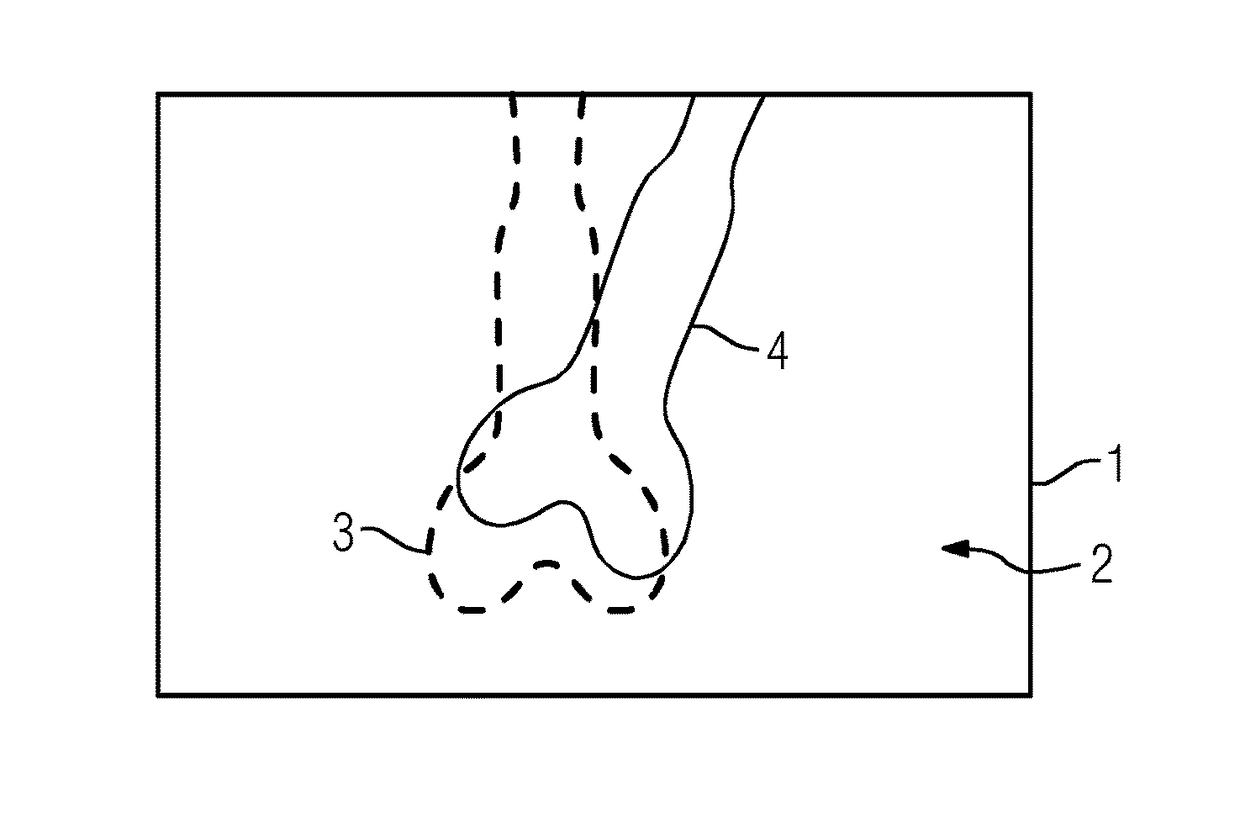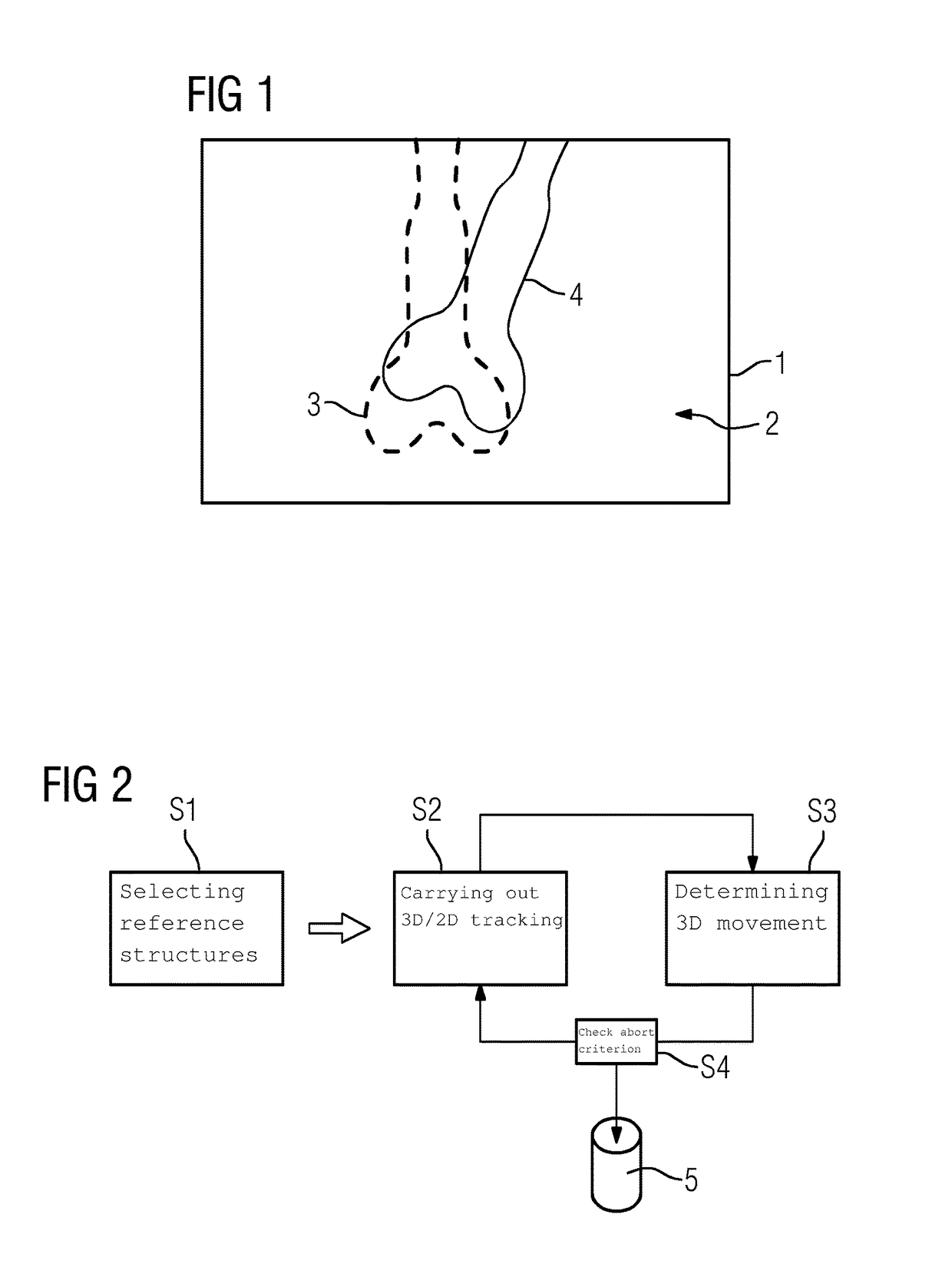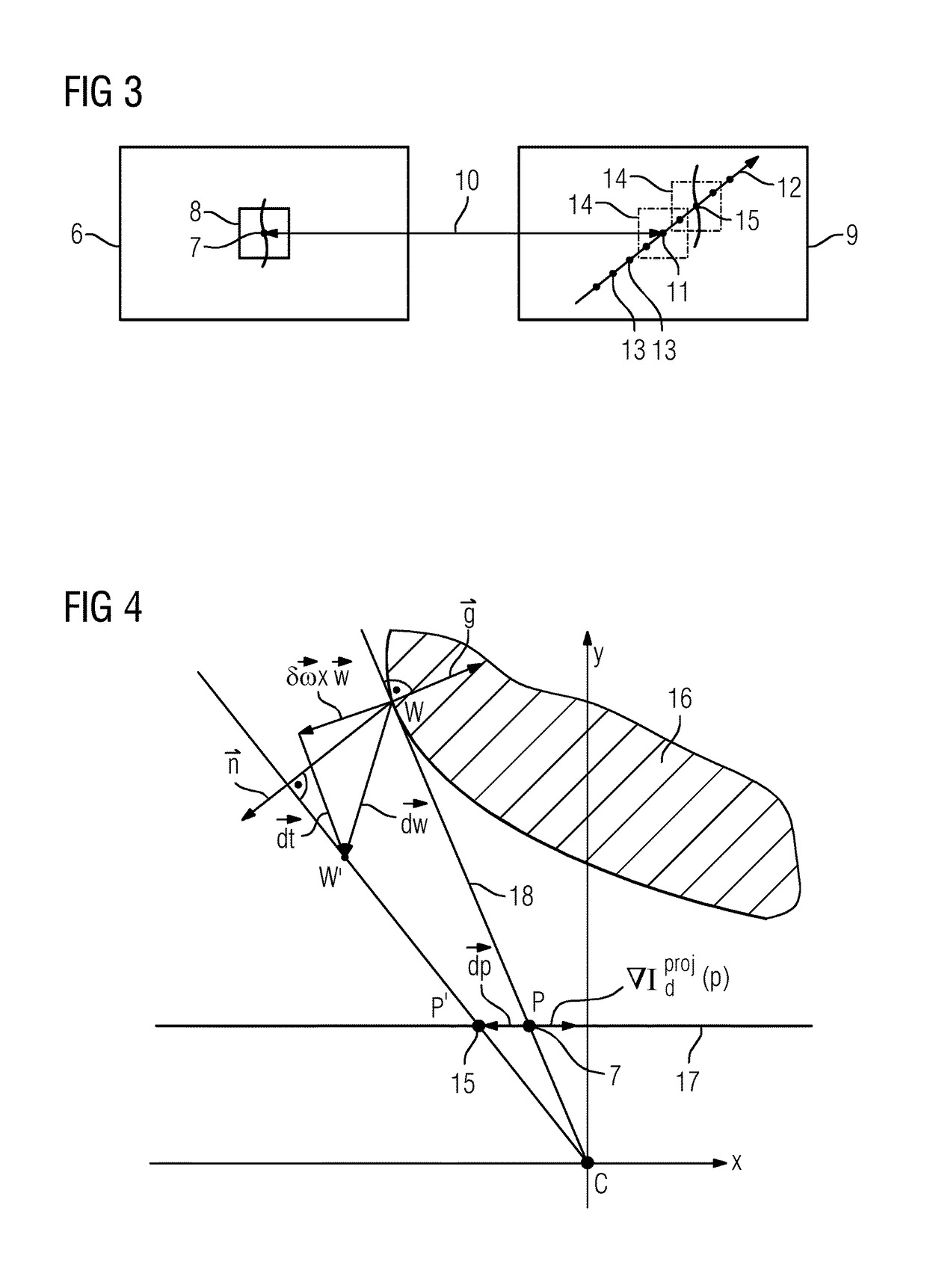Method for 2D/3D registration, computational apparatus, and computer program
a technology of computational apparatus and computer program, applied in the field of 2d/3d registration, can solve problems such as disadvantageous identification of error occurring in the movement estimation, inability to perform the procedure, and inability to correct the superposition
- Summary
- Abstract
- Description
- Claims
- Application Information
AI Technical Summary
Benefits of technology
Problems solved by technology
Method used
Image
Examples
Embodiment Construction
[0068]FIG. 1 depicts, in an exemplary manner and in principle, a superposition image 1 made of a three-dimensional image data record and an x-ray image, wherein the x-ray image 2 forms the basis on which information 3 from the three-dimensional image data record is superposed. An anatomical structure 4, in this case a bone, is identifiable in the x-ray image 2 in a shadow-like manner and with a low resolution. The information 3 relating to the same anatomical structure 4 was superposed from the three-dimensional image data record, wherein the superposition was brought about using an approximate initial transformation, and consequently an approximate 2D / 3D registration. The anatomical structure in accordance with the information 3 is slightly twisted and translated in relation to the visible anatomical structure 4 of the x-ray image 2. The exemplary embodiment of the method described below is now directed to establishing a registration transformation that leads to an accurate superpo...
PUM
 Login to View More
Login to View More Abstract
Description
Claims
Application Information
 Login to View More
Login to View More - R&D
- Intellectual Property
- Life Sciences
- Materials
- Tech Scout
- Unparalleled Data Quality
- Higher Quality Content
- 60% Fewer Hallucinations
Browse by: Latest US Patents, China's latest patents, Technical Efficacy Thesaurus, Application Domain, Technology Topic, Popular Technical Reports.
© 2025 PatSnap. All rights reserved.Legal|Privacy policy|Modern Slavery Act Transparency Statement|Sitemap|About US| Contact US: help@patsnap.com



